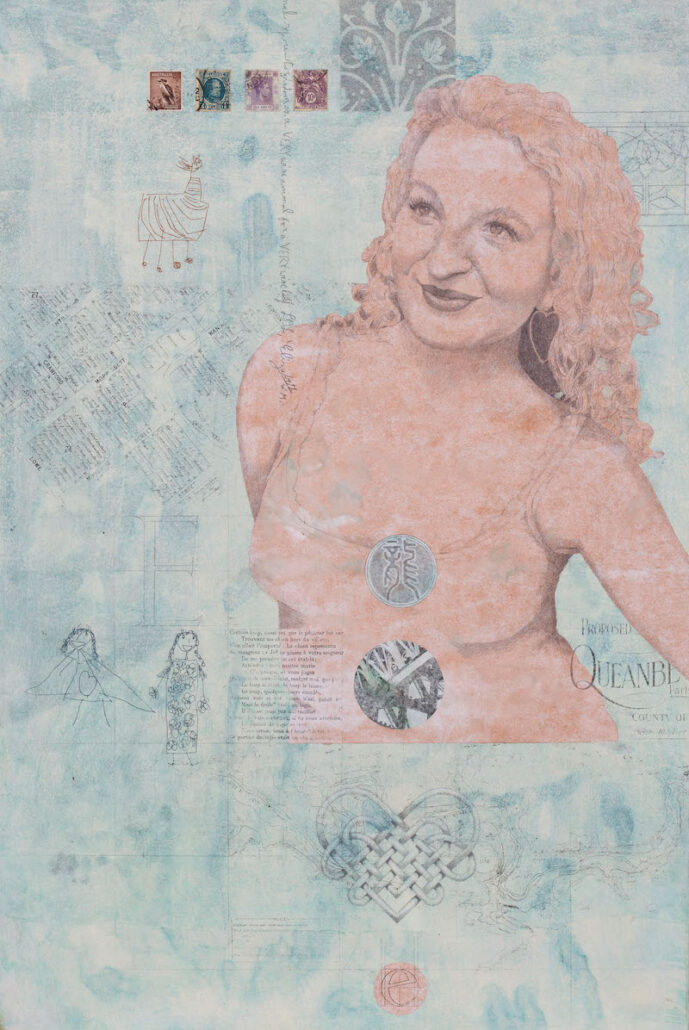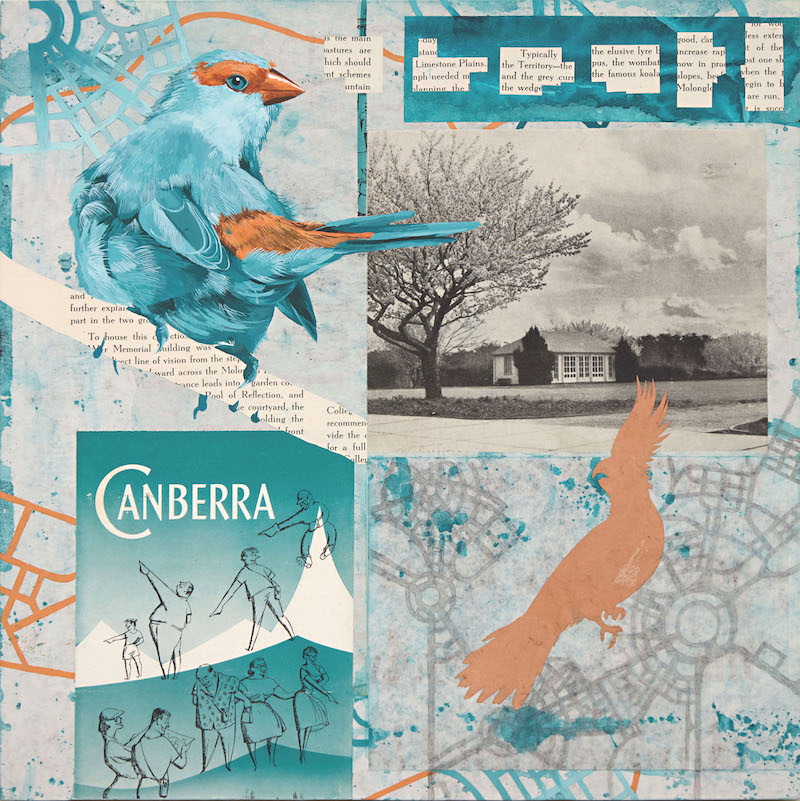Artist Liz Faul has lived a life of letters, so it seems only natural for them to feature prominently in her art practice. Having trained professionally in calligraphy and bookbinding in England, she came to art after a long and successful career designing books. The skills she picked up during this time are brought to bear on her artworks regularly, with perfectly formed script curling around corners and peeking into mixed media compositions. This works to great effect alongside the sense of nostalgia that permeates her collages which employ ephemera to create a mosaic of shape and line, each aspect building up a narrative that begs to be decoded.
The artist also regularly uses sections of text cut from books, though they are not intended to be used as explanatory text. “My work is figurative, and for me, inserting fragments of words and paragraphs is the same as whispering information about the subject”, says Faul. “We recognise words and letters broadly as information, and know that there is more to be understood”.
These elements therefore are unreliable narrators, simply pointing the audience in the right direction, encouraging them to look further and think more deeply. Sometimes, they hint at the workings of the artist herself, who has a habit of including keepsakes from her own life. “For my current work…a book about Canberra printed in the 1940s…became a springboard to exploring my life in the city and the rapid changes that are taking place here.” For Faul, text is a tool which can convey personal and historical significance.
Above: Liz Faul, Croquet at the Hotel Canberra, 2024. Mixed media collage*, 30.5 x 30.5cm. Courtesy: the artist.

Liz Faul, Barton, 2023. Mixed media collage*, 57 x 48cm.

Liz Faul, Esprit, 2018. Mixed media collage, 60 x 40cm.

Liz Faul, Turner to Griffith (diptych), 2023.
Collage* and gouache, 58 x 35cm.

